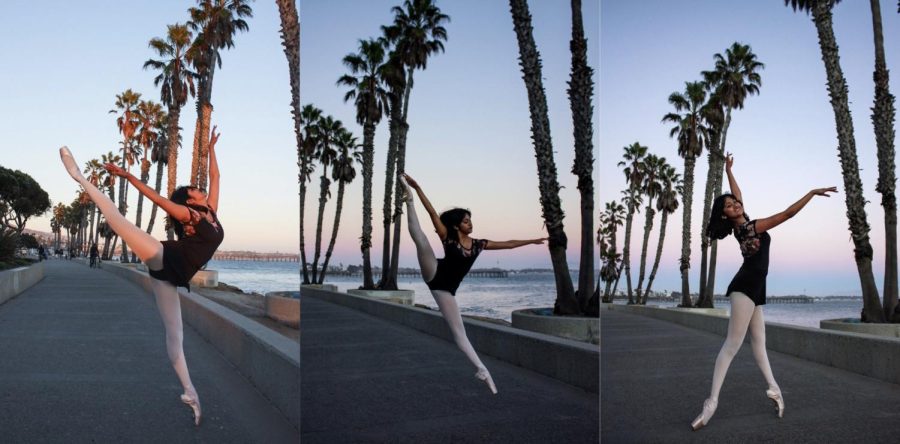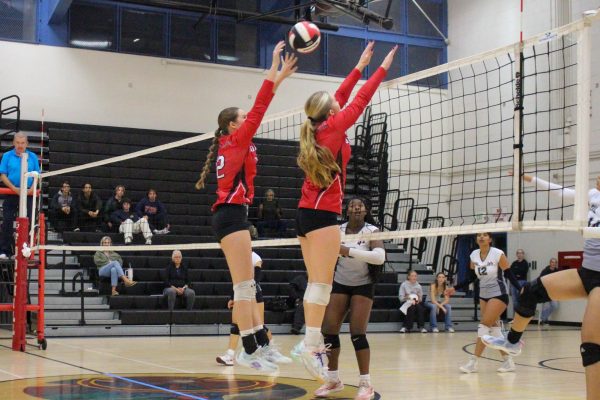Opinion: Why ballet needs to be considered a sport
Ballet, an activity often associated with grace, must be considered a sport because the rigor involved is equivalent to that of “traditional” sports.
September 29, 2022
When one thinks of ballet, one imagines a “beautiful” and “graceful” activity that is portrayed effortlessly by dancers in a large auditorium booming with classical music. This idea, however, only represents half the truth, and also represents ballet as an art form only — not as a “traditional” sport. “Traditional” sports like soccer and football are associated with loud, cheering audiences with cooperation and competition between participants. But what supporters of ballet being solely categorized as an art form don’t realize is that ballet is the same way. Ballet requires large amounts of cooperation with backstage crew during performances and some competition between dancers. Furthermore, dancers have to think about what techniques to use in order to present themselves “perfectly” on stage in order to please their audience. Therefore, ballet can also be considered a sport, but it functions differently than “traditional” sports.
According to the Council of Europe, a sport must “… [express] or [improve] physical fitness and mental well-being, [form] social relationships or [obtain] results in competition at all levels.” Taking note of this, the criteria of what makes something a sport can also be applied to ballet.
First off, ballerinas have lengthy classes — they must memorize mini routines known as combinations, build muscle strength and perfect steps for future performances. Additionally, cooperation is required for dancers to make dances like the pas de deux (dance of two), pas de trois (dance of three) and corps de ballet (group dance) visually pleasing. Finally, dancers can compete for scholarships and opportunities to dance at prestigious ballet studios through competitions like the Youth America Grand Prix (YAGP).
Additionally, ballet dancers emphasize body conditioning, or physical activities and exercises, the way athletes of other sports do. Sienna Darlucio ‘23, who has been doing ballet for 11 years at Ballet Academy Ventura (BAV), thinks that “body conditioning is crucial to be successful in ballet.”
“Doing things like stretching during your free time or pliés at home can greatly impact how you perform in ballet class. Keeping a flexible body is so important and it’s what makes ballet so fascinating to watch,” Darlucio explains. She also noted that when she is not performing, “I always see the crowd in awe when a dancer does a perfect penche or has a beautiful arabesque.”
Furthermore, many other dancers and non-dancers alike of Ventura, California believe ballet should be considered a sport.
Milo Kranzler ‘23 of El Camino High School (El Camino), who has been dancing at BAV since 2019, believes ballet is a sport because he “[practices ballet] five days a week and it takes skill and concentration to improve. It would be hard to have a school ballet team because of how demanding classes are, so in that respect, I’d say it’s actually harder than some other high school sports. Whoever says ‘ballet isn’t a sport’ should really take a class or two.”
Hayley Hall ‘25, who has been dancing for 13 years (10 years at BAV), states that ballet “should be a sport due to the sheer physicality and need for endurance.”
“I feel as if many people consider ballet to be an art form, however, it very much requires the same athleticism as a sport. It’s just as much as a solo activity and a team sport with all the people who cheer you on, perform with and mentor you. Many professional athletes include ballet as part of their conditioning because it improves flexibility, balance and coordination,” Hall explains.
Ayenthri Perera ‘24, who doesn’t do ballet, remarks, “Although I’ve never done ballet, ballet should be considered as a sport because of the extensive training that goes into it, the team bonding that comes with rehearsing and performing, the financial factors that play a part in the individual’s ability to perform and the overall blood, sweat and tears put into the activity altogether.”
Perera also mentions, “If an individual chooses to pursue a said sport as an extracurricular or a lifelong endeavor, they would generally […] sign up for practice meets, buy proper equipment,” like cleats, jerseys and knee/elbow pads, “and make time in their schedules to hone skills. All [of this can also apply] to ballet — expensive shoes, instructors and time spent practicing.”
Perera continues, “Within sports, teammates work together for a common goal: to improve and to win. Each sport has its own […] artistic element. Watching a sport played out, each player is in the zone knowing their position [and is] harmoniously in sync, and it is what I would refer to as the ‘art of the sport.’ Ballet, in its unique way, has an art form to it. However, to perfect that artistry, the individual, and the team as a whole must put their best efforts toward improving their craft,” she concludes.
Lily Toreja ‘24, who also doesn’t do ballet, thinks ballet should be considered a sport because “it requires immense focus, and each choreographed routine requires each dancer to have a certain level of physical and mental strength as well as technical skill to perform at their highest.”
Toreja also adds, “dancers are highly encouraged to take care of their bodies because it can take a rigorous toll on their health due to the high level of performance and technicality they dance at.”
Overall, ballet must be considered a sport because a lot goes on behind the scenes of what makes it enjoyable to watch. Ballerinas are athletes because they work hard and compete with themselves like the athletes of “traditional” sports. Hopefully, more people will eventually come to accept ballet as a sport.















Nevaeh Kay Sandberg • Feb 3, 2023 at 12:03 pm
I think this explains how dancers and Ballet dancers are/should be considered a sport. I’ve been doing Ballet for 7 years and it’s definitely a sport. I’ve cried dancing and also when I did comp (competition) it was 100% a sport like soccer and football with the crowds. Some people just don’t understand nor do they see it that way.